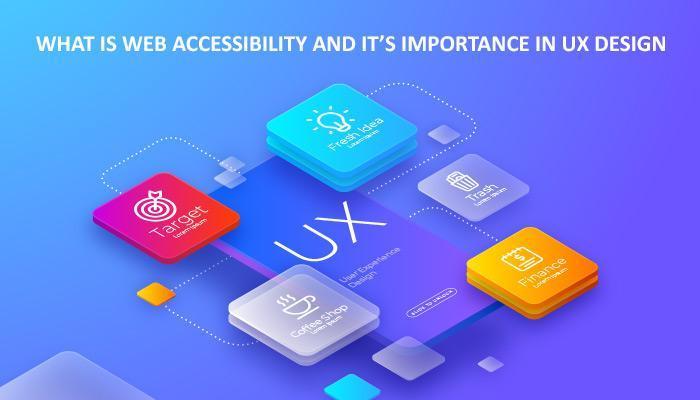In essence, web accessibility means allowing people access to a web design and letting them interact/use a product seamlessly. In practical terms, it is not that simple as it needs to be defined with clarity as to what we mean by ‘web accessibility’ and how it is a matter of concern in web design. UX design helps users/customers to interact and use a product or service on the web. However, the experience is not the same for all users and varies depending on the physical or mental challenges they might have to face.
Statistically, the group belonging to the category of physical and mental disability amounts to only 15% of the total world population (according to WHO). It is essential for UX developers and companies to consider making sites that are inclusive. It not only adds a new customer base for the business but also earns them users who will remain loyal for the long term. Accessibility plays an important role on how a user will successfully navigate and access the product. Some common types of disabilities that cause difficulty for users to interact with a web design are: Hearing disabilities (partial or full), visual disabilities such as colour blindness or impaired vision, motor skills or moving difficulties, learning or cognitive disabilities. Apart from these, one should also consider temporary disabilities such as a broken arm or temporary loss of sight while designing their product.
With the internet as a primary source of entertainment, buying/ selling almost everything, reading, booking tickets, making appointments, buying groceries etc., it is crucial that the user interface of a web design is such that it does not become a hassle for a disabled person to go about his daily chores and activities.
What is UX design – A user experience design is part of the software that lets the user interact/use the product with the aim to solve a problem or get an answer that they are seeking. It is a platform that lets the user get from one stage to another seamlessly with the help of simple and clear directions.
What is Accessibility – Accessibility in the context of web means giving the options and space for ‘all’ users to use a web design, especially the ones facing a disability of physical or mental nature. There are some common notions surrounding accessibility, which leads many companies to believe that making an accessible website might affect its quality and over all appearance or it would become restrictive in some sense.
Those notions mainly are:
- Designers face a hard time making an accessible web design – While it is true that providing full accessibility may impact the final design appearance, it is also a good idea to make some small yet thoughtful additions like offering an alternative text description for images, creating sound buttons below the text for users to click and get the information mentioned. Hence, in today’s day and time it is completely possible to create a design that is user-friendly for all and remains trendy and attractive.
- It is time consuming and expensive – Yes, incorporating certain features in the development stage is time consuming but on the bright side, it also reduces any additional cost at a later time that might go into making changes and improvements.
- Its insignificant – Well, it is insignificant for those who have not incorporated disability-friendly features. Data suggests that people facing disability are not on the list of users of such sites. While the percentage is small, it also includes senior citizens or users who are facing any form of temporary disability. Their inability to use your site will make them choose a different platform very quickly and build your reputation as being non-inclusive.
Benefits of Accessibility
- Better SEO Rankings – SEO gives preference to those using technologies such as screen readers. An inclusive web design will naturally be rated higher on search results as it would also want such platforms to be accessible to more and more people. You can hire dedicated web developers from India who are qualified and equipped to create inclusive designs at a very cost-effective package. Outsourcing can help save on any extra cost that might go into adding inclusive features in the design.
- Greater audience – You can simply earn yourself an audience which is mostly neglected or overlooked by most business. This customer base has equal or a higher buying capacity and will want to remain a loyal user. Hire developers who are equipped as well as patient enough to give you a UX design that is well-designed and holds space for all types of users.
- Public Relations – Naturally, an inclusive and thoughtful design will lead to better reputation of the brand. You will not just be seen as a profit-oriented company but also one that is aware and concerned about everyone’s well-being and growth.
Importance of Accessibility
- Legal Compliance – In the US, accessibility requirements are listed in the Americans with Disabilities Act, 1990. Other countries worldwide have taken legal measures to ensure that UX design accessibility be considered an important issue as it impacts the day to day functioning and happiness of people. For example, Facebook has been praised for its policies regarding accessibility. Netflix had to make changes in its video content by adding subtitles due to legal complaints.
- Improved Reputation – Companies have received warm and positive feedback for bringing accessible features to their web designs. It shows compassion and responsibility towards society as well as brings profit and more business to them.
- Acquiring new customers – As mentioned above, users facing disabilities tend to boycott companies who do not consider their special needs while designing something. They are then willing to spend even more for the same product or service if that means they will feel included and valued.



